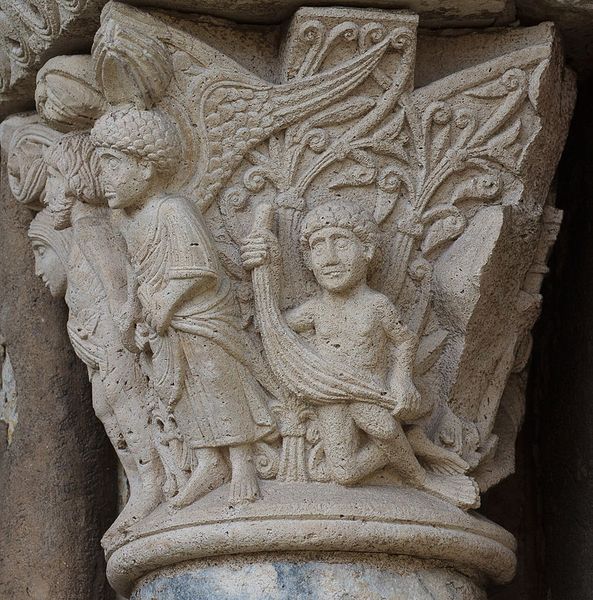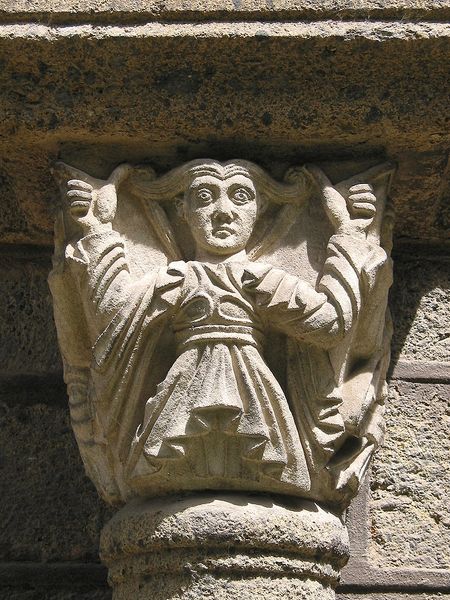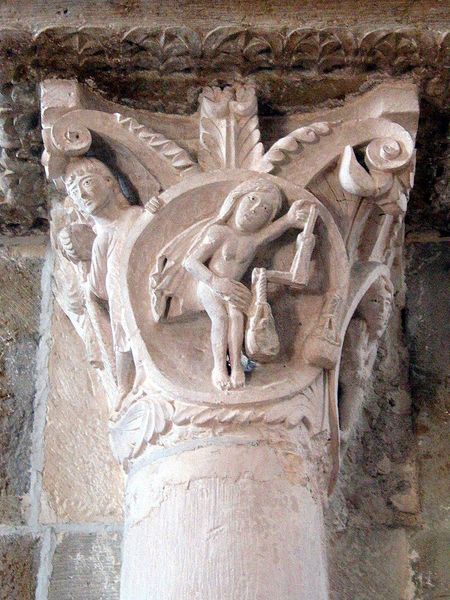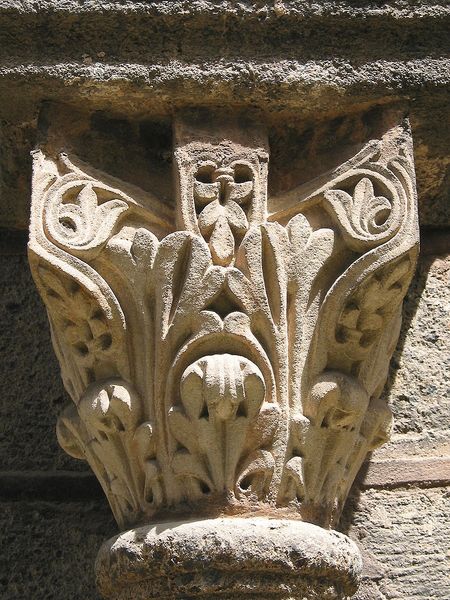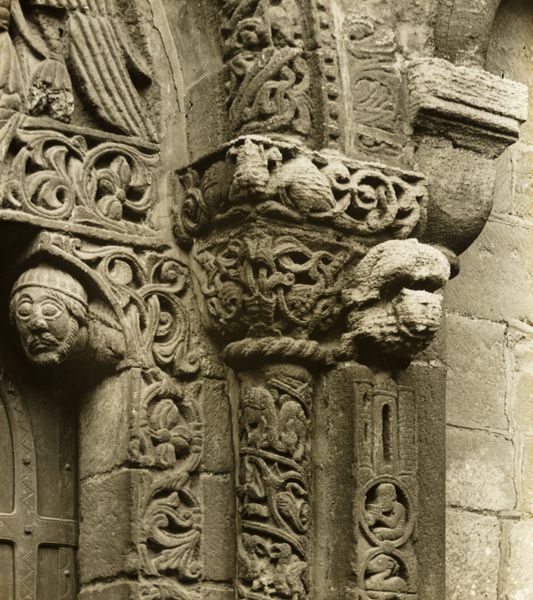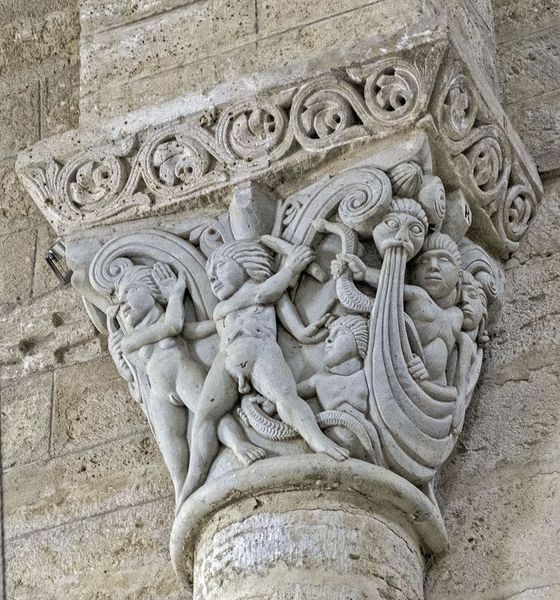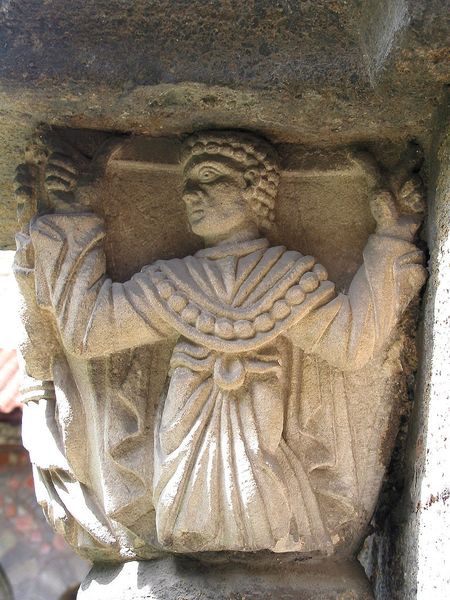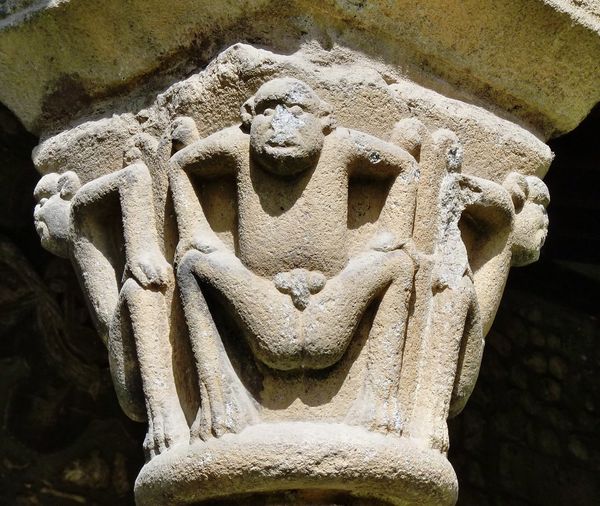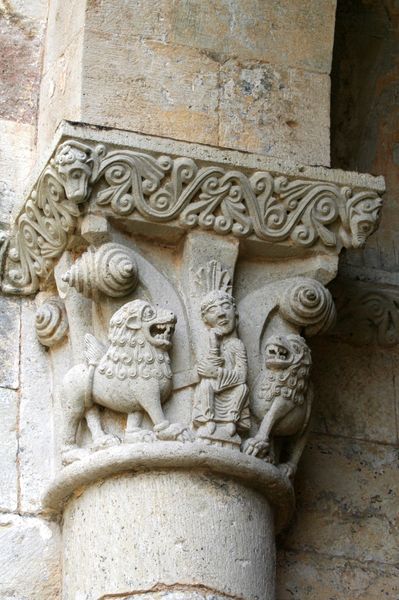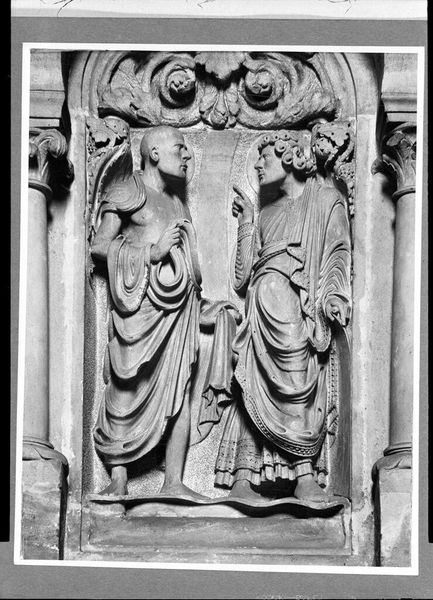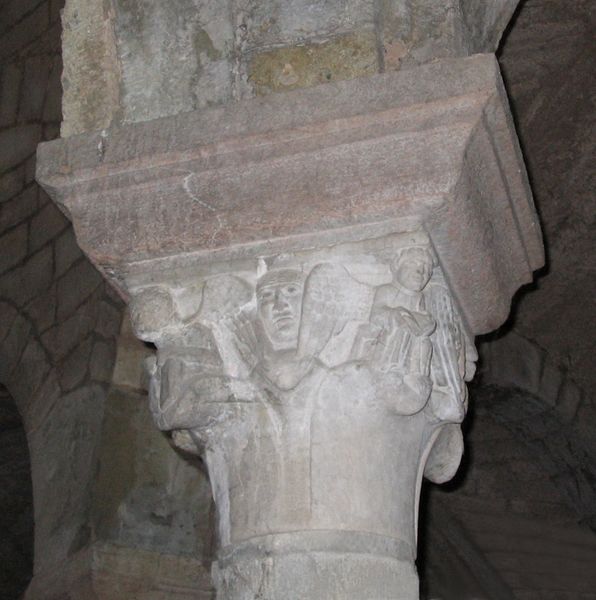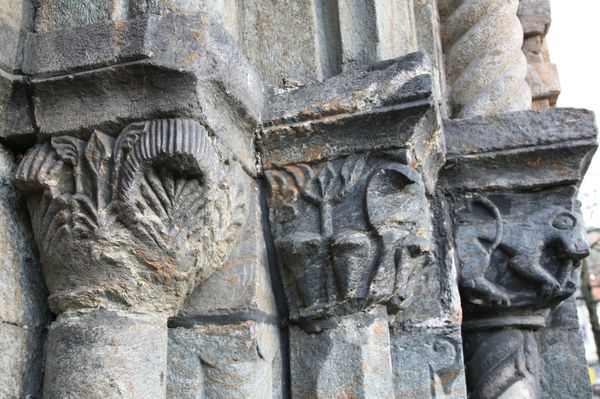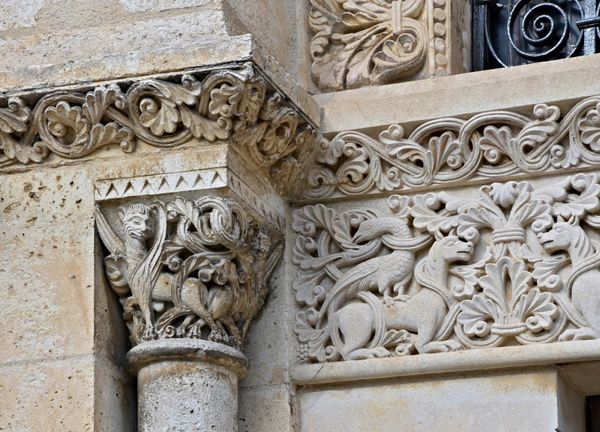
carving, sculpture, architecture
#
medieval
#
carving
#
historic architecture
#
romanesque
#
sculpture
#
architecture
Copyright: Public domain
This Romanesque capital, part of the Abbey Church of St James in Lébény, Hungary, presents us with potent symbols of its time. The angel, with its serene countenance and outstretched wings, embodies divine protection and mediation between the earthly and celestial realms. Angels, however, are not unique to Christian iconography. Winged figures appear in Mesopotamian art as protective spirits, and in classical art as symbols of victory. This motif, deeply rooted in human culture, reflects our perennial yearning for transcendence. Even the stylized foliage evokes the Tree of Life, a concept echoed in various cultures from ancient Egypt to Norse mythology. The angel persists as a powerful archetype—a conduit to the sacred—yet its symbolism is never fixed. It resurfaces, evolves, and takes on new meanings in different historical contexts. This non-linear progression speaks to the enduring, cyclical nature of symbols themselves.
Comments
No comments
Be the first to comment and join the conversation on the ultimate creative platform.
